Almanac: Winter Colors
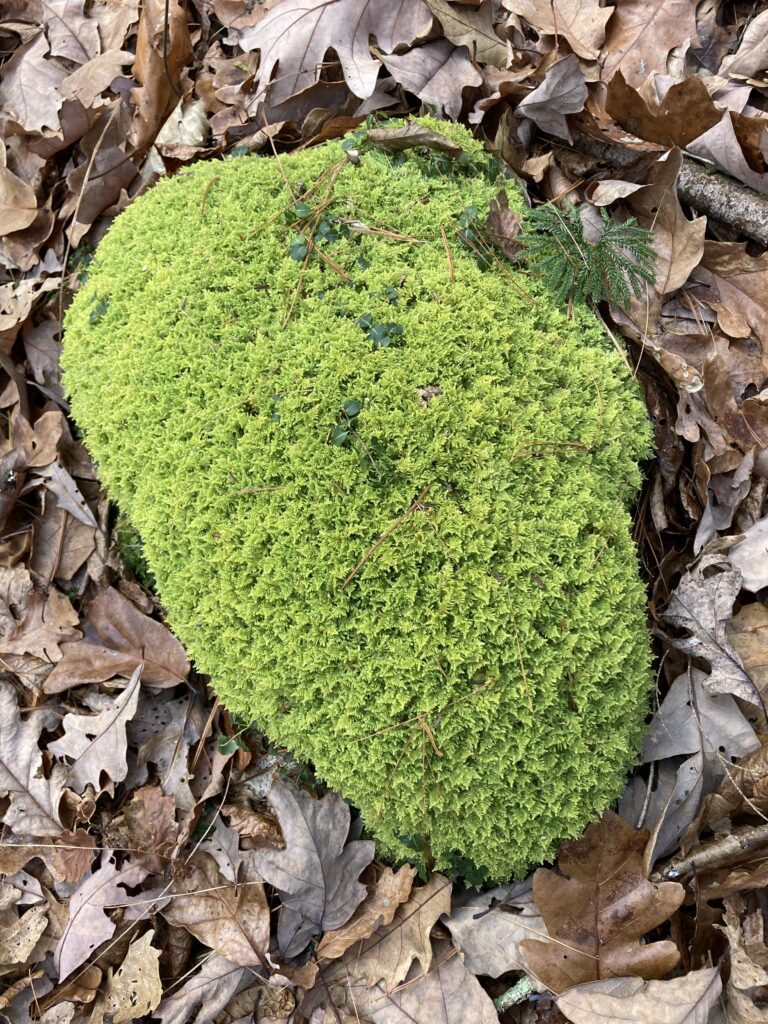
Our many local moss species have been very happy with all the rain lately, glowing in many shades of green. This is a type of fern moss (Thuidium delicatulum), so named because of its delicate compound leaves. Moss was the first kind of plant to colonize land, roughly 400 million years ago. For millions of years, as far as the eye could see, the land in temperate areas was one vast carpet of moss. Ferns, which are much more structurally complex, evolved from moss around 360 million years ago. Photo: Stephen Braun
Viewed at a macro scale our local landscape looks pretty drab this time of year, especially these days as we await our first real snowfall. The woods and fields are studies in brown—attractive in their own ways, of course, but a long way from the flaming, exuberant colors of autumn. If you slow down and take a closer look as you ramble outdoors, however, you may be surprised at the rainbow of colors that still exists, albeit on a small scale. Most dominant now are the many shades of green offered by mosses, such as the fern moss above. But below are some recent shots of organisms displaying other eye-catching colors.
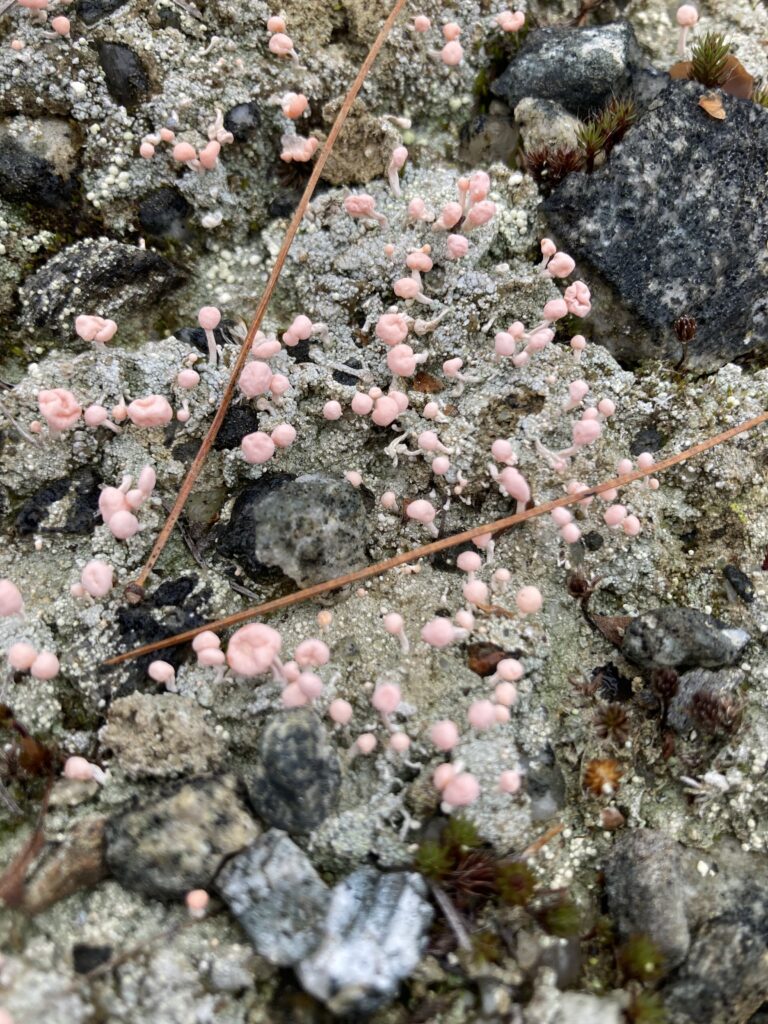
I found these Pink Earth lichen (Dibaeis baeomyces) on an patch of exposed rock above the abandoned quarry at the heart of the Mineral Hills Conservation Area in Florence. I’ve never found anything pink at this time of year before! The pink tips are where the spore-producing cells of the lichen are found. Like all lichens, these are a symbiosis between an algae, which produces food via photosynthesis, and a fungus, which provides the physical structure of the plant.
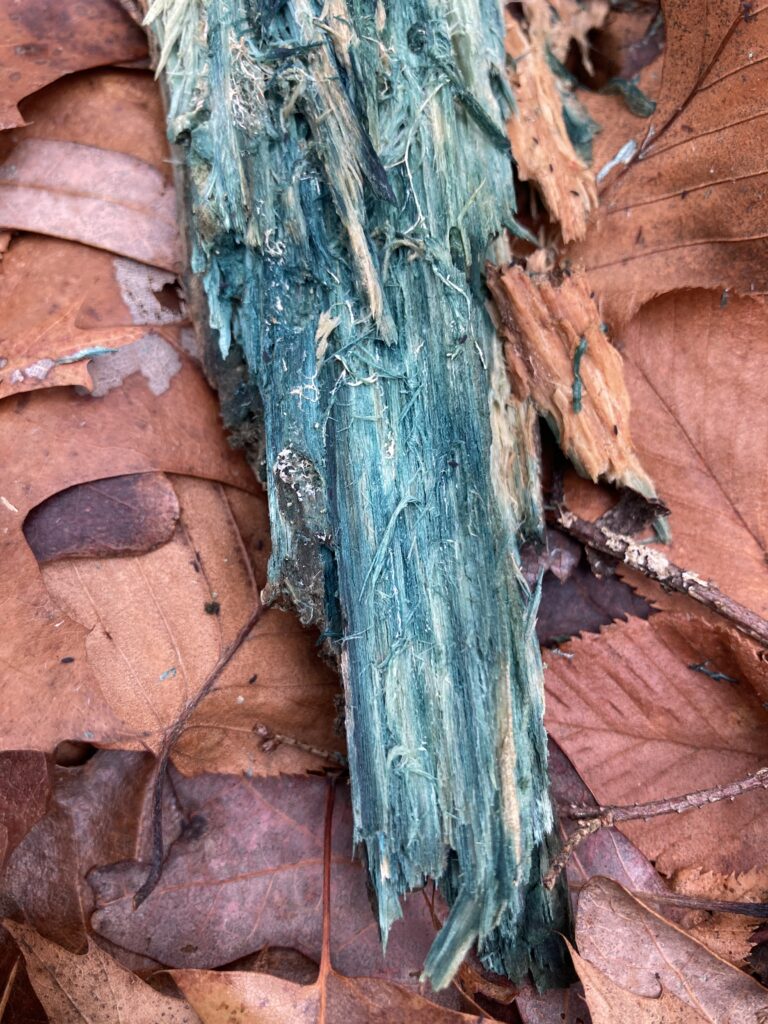
This decaying wood has been colonized by a type of Green Stain fungi. Most of the time you do not see the diminutive cup-like fruiting bodies of these fungi, you only find this kind of brilliant blue-green stained wood, usually on fallen deciduous logs such as aspen, ash, or oak. Such stained wood was highly prized by 14th and 15th century Italian Renaissance woodworkers, who used it to add blue-green colors to their intricate wood inlays.
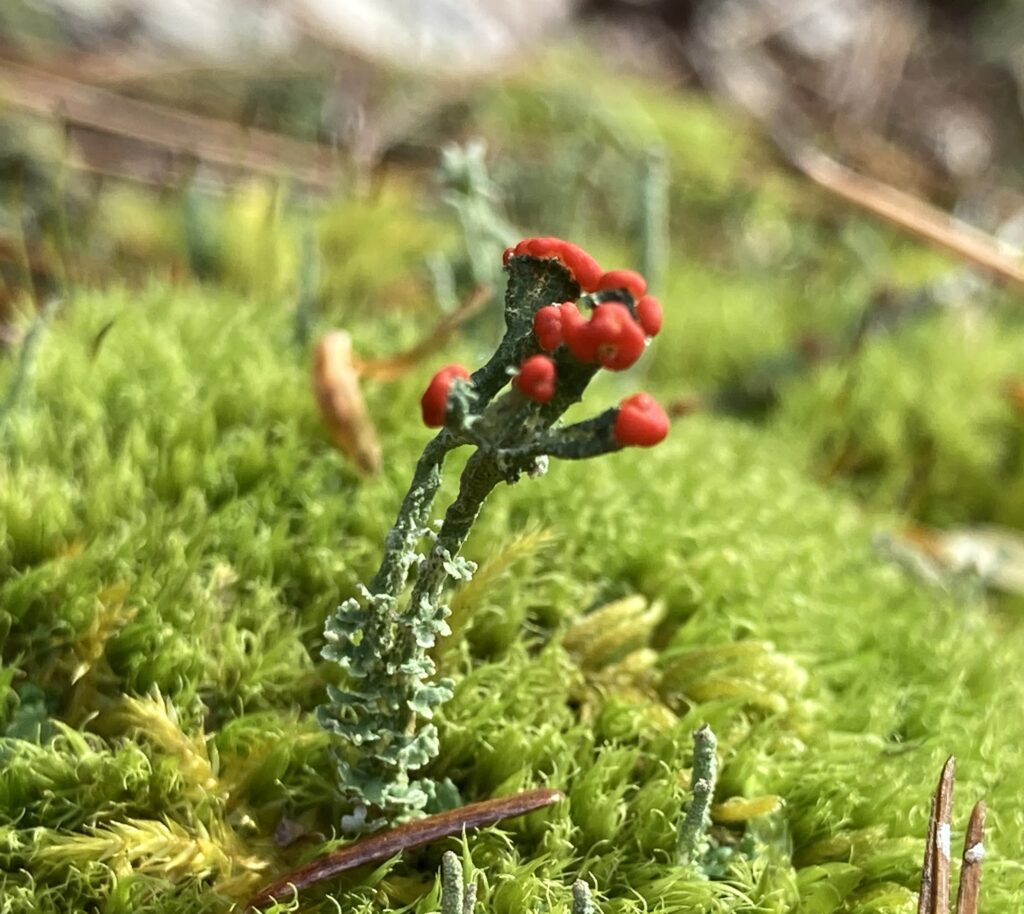
This is British Soldier lichen (Cladonia cristatella) growing above a carpet of moss. British Soldier is quite common in our area and is structurally, though not genetically, similar to the Pink Earth lichen above. Some naturalists suggest that the red pigment helps protect the spores from sun damage or serves as a warning to keep animals from eating it. Others believe the opposite—that it attracts herbivores that eat the lichen and spread the spores via scat.
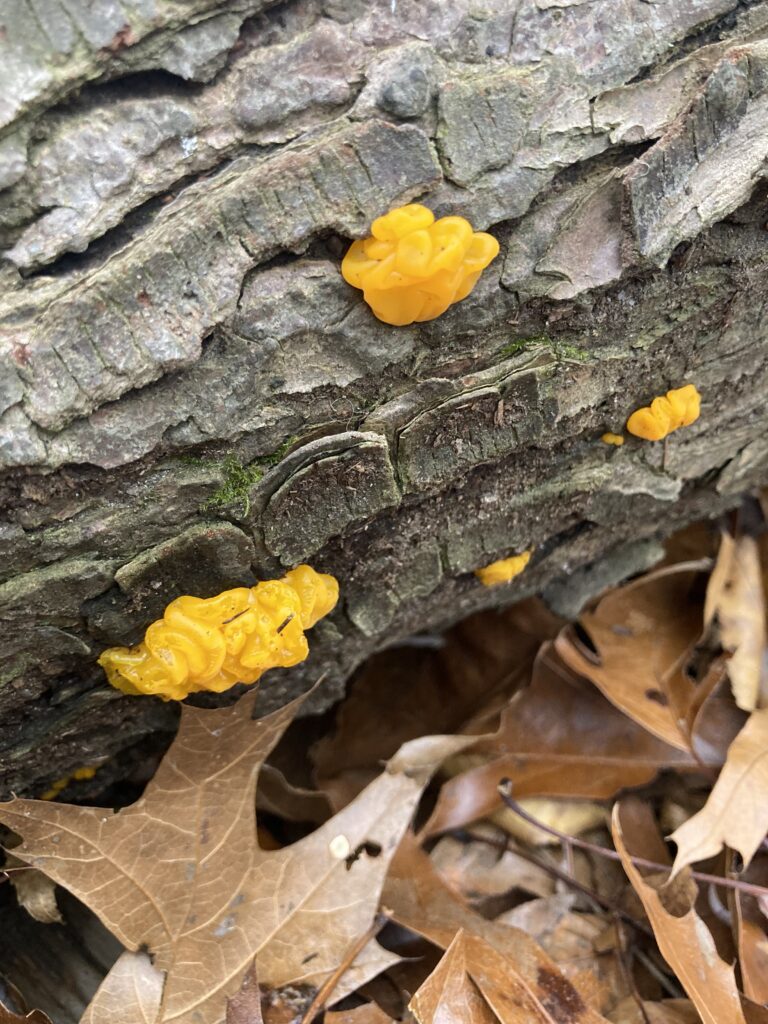
Jelly fungi can provide some delightful orange and yellow accents this time of year. If you find a yellow jelly on a hardwood tree it’s likely the “witches butter” shown here. Orange jellies more typically live on conifers, especially hemlocks. Jelly fungi have no stem and no gills or visible pores like their more familiar mushroom brethren. The glistening surface of jellies is covered with the microscopic spore-producing structures called basidia. Like mushrooms, the colorful jellies we see are just the easily-visible reproductive stage of the fungus, the more long-lasting part being the thin webs of hyphae that penetrate soil, wood, or other substrates and actually perform the bulk of the metabolic and structural work of any fungal species.
Almanac is a regular Indy column of observations, musings, and occasional harangues related to the woods, waters, mountains, and skies of the Pioneer Valley. Please feel free to comment on posts and add your own experiences or observations.

As my fruit-tree-filled front lawn turns more to moss than grass, my neighbors now know: the moss was here first!
Thanks once again, Steve, for giving this wonderfully warm winter solstice a green glow — and a perfectly pleasant perihelion to everyone (regardless of your hemisphere 😉 ),